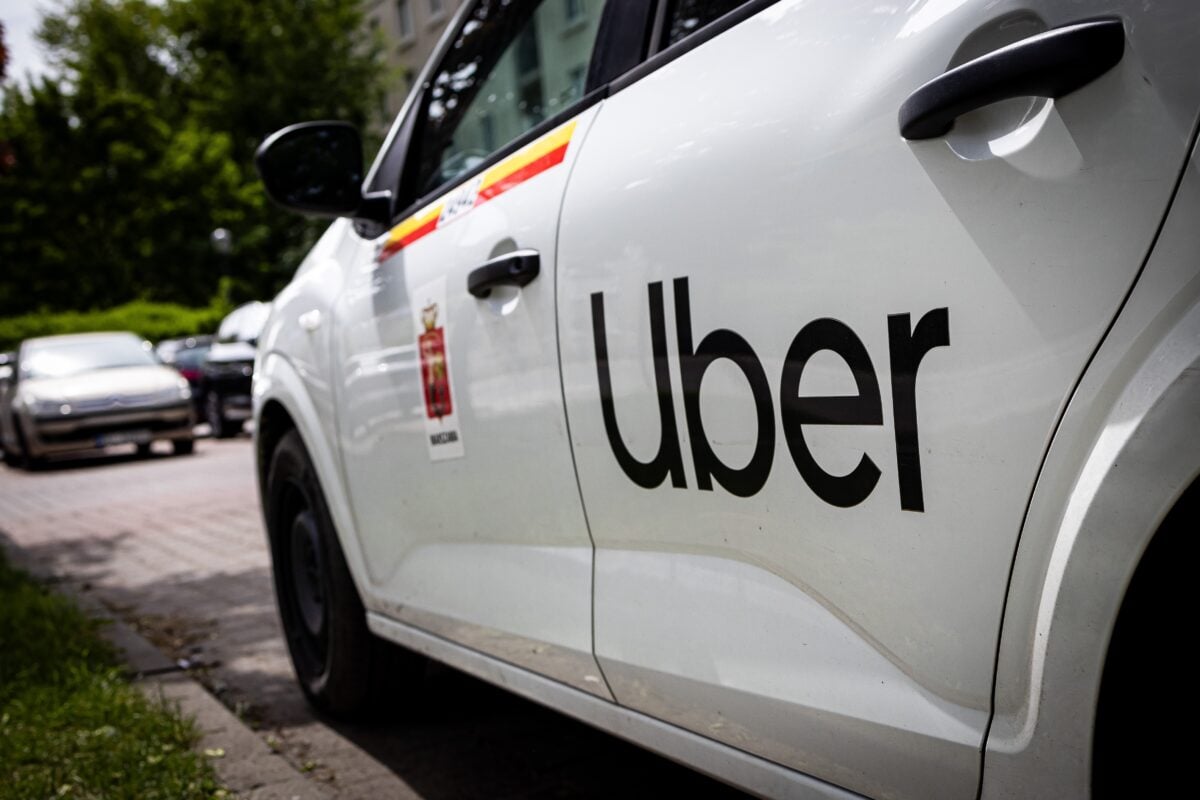TLDRs:
Contents
- Uber seeks new capital to support its $300M Lucid-Nuro robotaxi expansion plans.
- The company may sell minority stakes in units to help scale autonomous fleets.
- Over 20,000 Lucid Gravity SUVs will run Nuro’s self-driving tech under a six-year deployment plan.
- Analysts see robotaxis as key to Uber’s long-term profitability by reducing driver dependency.
Uber is doubling down on its autonomous vehicle future, seeking fresh investments to fund its ambitious robotaxi rollout.
The company is currently in talks with private equity firms and banks to secure capital that will scale its operations across the U.S. and beyond. Central to this plan is a $300 million partnership with electric vehicle maker Lucid Motors and self-driving tech startup Nuro, announced in July 2025.
This deal aims to deploy more than 20,000 Lucid Gravity SUVs equipped with Nuro’s autonomous systems over the next six years. The rollout is set to begin in at least one major U.S. city by late 2026, marking a renewed push by Uber into the robotaxi space after stepping back from in-house autonomous development in 2020.
Prototype Testing Underway as Uber Eyes Multi-City Deployment
The first prototype of the Lucid-Nuro robotaxi is currently undergoing autonomous testing at Nuro’s Las Vegas facility.
For the service to go live, however, additional operating licenses will be required at the state level. Uber has already begun limited autonomous ride offerings in Austin and Atlanta using Waymo vehicles, hinting at the company’s evolving multi-partner strategy.
The new Lucid-Nuro venture is part of Uber’s broader vision to make driverless transportation a scalable and profitable segment of its platform. Instead of vertical integration, Uber is leveraging strategic alliances to reduce costs and speed up market entry.
Flexible Business Models and Fresh Cash to Fuel Growth
To fund this robotaxi expansion, Uber may allocate a portion of its $7 billion in annual cash flow, but it’s also exploring the sale of minority stakes in some of its internal units. The company is reportedly evaluating several business models, including fixed payments to partners, revenue sharing with fleet operators, and full vehicle ownership while licensing the software.
According to analysts, scaling robotaxi operations could significantly improve Uber’s profit margins by reducing dependence on human drivers, a major cost factor in ride-hailing.
Robotaxi Market Sees Second Wave of Investment
This partnership reflects a broader trend in the autonomous vehicle space, where major players are shifting from direct development to strategic collaborations.
Uber’s current alliances with Lucid, Nuro, Waymo, Aurora, and Volkswagen highlight this pivot.
The robotaxi industry is entering a second major investment cycle, with companies like Uber making billion-dollar bets to secure an early lead. As technology matures and regulatory frameworks evolve, experts believe the path to full-scale autonomous ride-hailing is becoming more tangible, albeit still complex.
That said, Uber’s re-entry into the self-driving race shows its long-term vision: a hybrid fleet of human and autonomous drivers. With fresh funding, scalable partnerships, and a six-year roadmap, Uber appears poised to compete aggressively in the future of urban transportation.


